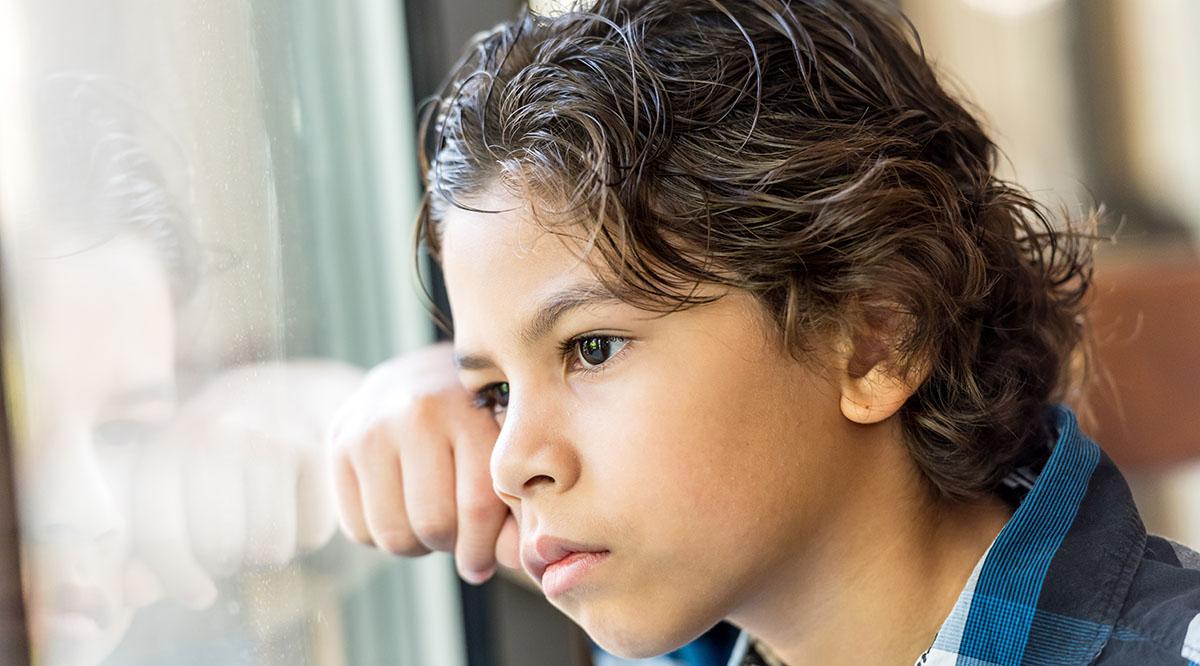Editor's note: The opinions expressed by the author do not necessarily reflect the opinions of the AAMC or its members.
As a child psychiatrist in an urban clinic and a juvenile detention center in San Antonio, I often witness the devastating mental health challenges faced by children of color.
These children must cope with multiple layers of obstacles rooted in racism and poverty, including discrimination, under-resourced schools, and community violence. The COVID-19 pandemic has only thickened these layers.
Black and Latinx children have seen more COVID-19-related infection and death in their communities than White children have. Their families have suffered disproportionate economic setbacks as well, with Hispanic women and immigrants among the groups most affected by job loss during the pandemic, according to the Pew Research Center. Young people in these hard-hit families are at risk for food insecurity, unstable housing, and even the effects of domestic violence, which rises during tough financial times.
The stress on the adults in these communities may also make it harder for them to be available for their children, and they may be less likely to have access to healthy stress management approaches. A national survey found that Black and Latino/Hispanic adults reported higher rates of negative mental health consequences from the pandemic — including suicidal thoughts — than did White people.
All this affects children’s mental health. And it shows.
I see this among the patients I treat in the juvenile detention center, for example, where most are children of color. (Black and Latinx young people are more likely to be held in juvenile facilities.) Delayed court hearings and fewer opportunities to connect with their families can cause these youths significant anxiety, and the fear that infected relatives could die while they are in detention can result in unthinkable distress.
Black and Latinx children require a strong response from all of us, clearly demonstrating that they matter, that they belong and are valued, and that their safety and human rights are protected in this country.
What’s more, recent worries about race-based police violence and heightened awareness of racial injustice only increase the stress on children in communities of color. After the police killing of George Floyd, a 13-year-old girl I treated told me she was worried that her brother “could be next.”
The fallout of stresses on children of color terrifies me at times. For example, the suicide rate for Black children ages 5 to 12 is nearly twice as high as among White children in that age group. And some experts expect such numbers have worsened during the pandemic. But even more concerning to me are the invisible, long-term effects that reduced learning and social development from school closures and family stress can have on children’s psychological development.
And though I know how resilient communities of color are, it is unjust for us to stand by idly when we know how severely racism affects the health care Black and Latinx families receive.
Black and Latinx children require a strong response from all of us, clearly demonstrating that they matter, that they belong and are valued, and that their safety and human rights are protected in this country.
Toward a better future
So much needs to happen to protect the mental health of children of color. Here are just some of the many ways forward.
Build trust. Children and families of color may be hesitant to get mental health treatment, partly because of biases they see in the health care system. It is up to us to regain their trust.
At a minimum, providers must examine our own biases by taking the Implicit Association Test. We must educate ourselves about our country’s history of structural racism and about how poverty and racism affect health. Perhaps above all, we must take a learner role with our patients as we listen to the ways that social structures have impacted their lives and their health.
Engage caregivers. So often, although caregivers are doing their best, they need much more help than they’re receiving in order to support their children. When I meet with caregivers, I always make sure to ask if there’s anything I can do to promote their well-being. It’s also important to help them release their own emotions.
In one case, I saw a 9-year-old who, until recently, had been living with an abusive aunt. The boy’s mother became tearful describing her guilt over not knowing what her child had been experiencing. I offered words of support and some explanations of what to expect during the family’s transition. The woman’s tears were accompanied by deep expressions of gratitude.
We need to encourage caregivers to arrange for their children to meet with other adults who can help them express their emotions and develop healthy coping skills. Opportunities include mentorship programs, faith-based gatherings, and arts and other activities that strengthen children’s connections to their cultures and pride in their identities. We also can help caregivers form connections with a child’s school by contacting the school counselor on their behalf.
Help keep kids out of the penal system. In Black and Latinx neighborhoods, police are too often involved in addressing family crises and school discipline when it is not necessary. Mental health providers can educate school leaders, teachers, and policymakers about the school-to-prison pipeline and the negative consequences this has on the well-being of racial and ethnic minority youth, their families, and the broader community. We should call for the implementation and adequate funding of mobile crisis response teams equipped with clinicians and community leaders. These teams rely on techniques other than force, which can help prevent further traumatization of children already living in vulnerable situations.
Educate future mental health providers about using a health equity lens. A health equity approach to care is developed over time, through learning to listen to and be guided by our patients. It requires providing medical trainees opportunities to see firsthand the link between the medical facts and concepts they study and the lived realities of the patients they serve.
Medical schools and teaching hospitals hoping to support trainees interested in health equity can help them learn from local youth by partnering with community agencies that serve children of color. We can also support advocacy opportunities for students, such as volunteering in collaborations between providers and legal agencies that advocate for Black and Latinx youth.
Embrace children of color. A few weeks ago, my 3-year-old told me he needed to wash his legs because they were dirty. My heart sank, as I knew exactly what he meant. As a Brown girl, I grew up hearing and eventually internalizing the message that my skin was dirty. Such experiences are well-known by Black and Brown kids. As a mother who is trying to be actively anti-racist, has filled our bookshelves with stories about Black and Brown people, and openly talks about “our beautiful brown skin,” I still am not able to stop my Brown boy from seeing the darker patches of his skin as problematic.
My son’s ability to see his beauty and strength requires the re-imagining of what is beautiful and what is accepted. Black and Latinx children need all of us to highlight their value and make a full commitment to making this a more equitable and just world for them. Without this foundational commitment, equity in child mental health services is not possible.

